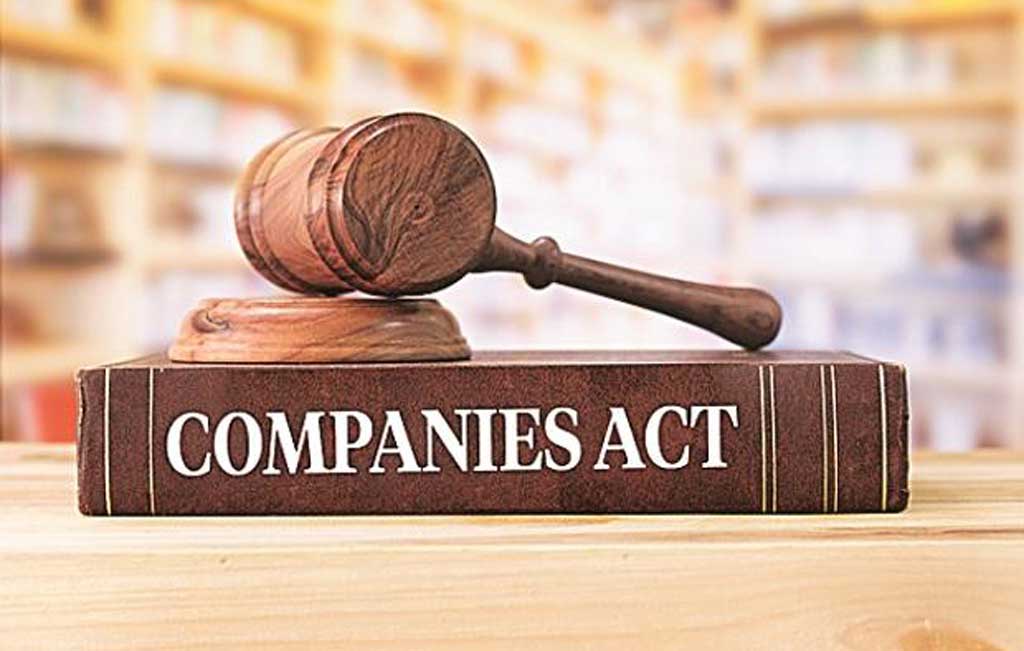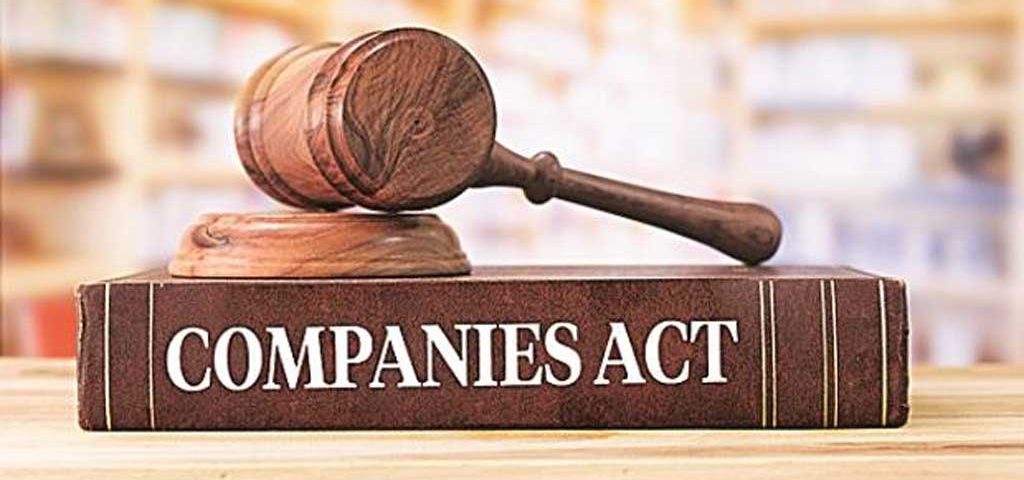
Small Company | By Mahavir Toshniwal
June 27, 2022MAJOR AMENDMENTS IN COMPANIES ACT, 2013 RELATING TO ACCOUNTS & AUDIT | By Mahavir Toshniwal

I. Audit Trail
Meaning:
An audit trail is a register of every action, event, or activity a user or a system did with your data. Thus, it can be related to creation, modification, deletion of records, or can be a sequence of automated system actions.
- In accounting, an audit trail is used to trace back to source records or transactions
- An audit trail is a step-by-step record by which accounting, trade details, or other financial data can be traced to its source.
- An audit trail is most often utilized when the accuracy of an item needs to be verified, such as in the case of an audit.
- An audit trail provides basic information to backtrack through the entire trail of events to its origin, usually the original creation of the record. This may include user activities, access to data, login attempts, administrator activities, or automated system activities.
- It basically helps to track changes that affect the integrity of a transaction, such as changes made to Date, Ledger Masters and Amounts in the Voucher are reflected.
How it works:
The below image depicts the changes made to the accounting entry which are highlighted in yellow and user who made those changes through audit trail feature
Objective behind the amendment
Fraud detection and risk assessment are very important parts of Audit. The existence of an Audit Trail and Edit log would help the auditor make a fair assessment of risk.
The compulsory maintenance of audit trail is a way to ensure the fabrication of books and any subsequent overwriting in the books of accounts. Through the audit trails, any person scrutinizing the books of accounts can very easily track what changes have been made to the accounts and can require the company to explain the reasons thereof.
Management would also realize the fact that the Audit Trail and edit log will increase the chances of identifying employee frauds and embezzlements. The added responsibility on an Auditor now would be to enquire and be satisfied with the management’s response for the reasons for deletions and alterations.
Amendments:
1. Section 128(1) read with Sub rule 1 of Rule 3 of The Companies (Accounts) Rules, 2014 (Proviso added to the sub rule 1 of Rule 3) (Rule 3 prescribes the manner in which books of accounts are to be kept in the electronic mode)
For the financial year commencing on or after the 1st day of April, 2022, every company which uses accounting software for maintaining its books of account, shall use only such accounting software which has a feature of recording audit trail of each and every transaction, creating an edit log of each change made in books of account along with the date when such changes were made and ensuring that the audit trail cannot be disabled.
[MCA through its notification dated 01st April 2021, deferred the applicability of usage of accounting software with audit trail from 01st April 2021 to 01st April 2022]
- Log – In computing, a log is a file that records either events that occur in an operating system or other software runs, or messages between different users of a communication software.
- Edit Log – logor record of all notable changes made to a particular record.
2. Reporting by Auditor:
The Companies (Audit and Auditor) Rules, 2014 (“Audit Rules”) have been correspondingly modified wherein auditors are now required to report, as part of the auditor’s report, as to whether, the accounting software used by the company being audited has the feature of recording audit trail (edit logs), the audit trail feature was operational throughout the financial year and had not been “tampered” with and such audit trails have been retained for the period as statutorily prescribed.
II. Amendments in Schedule III
Schedule III of the Companies Act, 2013, provides the framework for preparing financial statements such as the Balance Sheet and the Statement of Profit and Loss of the company.
Schedule III is divided into 3 divisions:
Objective behind the amendment:
The main aim of the amendments in Schedule III is to improve the transparency in the financial statements of the company. This will help the person reading these statements get a better understanding of the functioning of the company.
Amendments:
The amendment rules were announced by MCA w.e.f from 1st April 2021. The gist of the amendments are mentioned below;
A. Earlier companies had to round off the figures appearing in the financial statements based on “turnover”; however, based on the latest amendment rounding off will be based on the “total income”.
Total Income less than Rs. 100 crores – Nearest hundreds, thousands, lakhs or millions
Total Income more than Rs. 100 crores – Nearest lakhs, millions or crores
B. The notes under the balance sheet are subject to additional disclosures as mentioned below:
- The note on share capital has to disclose the details of shareholding of the promoters, along with changes, if any
- Trade Payable (Creditors) ageing Schedule shall provide ageing schedule for trade payables due for the periodicity of 1 year, 1-2-year, 2-3 year & more than 3 years
- Trade receivables (Debtors) ageing Schedule shall provide details of trade receivables i.e. including undisputed and disputed trade receivables considered good and doubtful with ageing classified as less than 6 months, 6 months to 1 year, 1-2 years, 2-3 years and 3 years or more along with disclosures separate disclosure for information of unbilled dues
- the details of all immovable property where Title deeds of Immovable Property not held in name of the Company and where such immovable property is jointly held with others, details are required to be given to the extent of the company‘s share
- Disclosure on revaluation of Assets
- Disclosure on Loans/ Advance to Directors/ KMP/ Related parties
- aging schedule for Capital-Work-in Progress (CWIP)
- Intangible assets under development Schedule
- Details of Benami Property held Where any proceedings have been initiated or pending against the company for holding any benami property under the Benami Transactions (Prohibition) Act, 1988 (45 of 1988)
- Details of Borrowing
- Willful Defaulter Where a company is a declared willful defaulter by any bank
- Relationship with Struck off Companies
- Compliance with number of layers of companies
- Details of charges or satisfaction yet to be registered with RoC beyond the statutory period, details and reasons thereof shall be disclosed
- Following Ratios to be disclosed:
Division I and II – (a) Current Ratio, (b) Debt-Equity Ratio, (c) Debt Service Coverage Ratio, (d) Return on Equity Ratio, (e) Inventory turnover ratio, (f) Trade Receivables turnover ratio, (g) Trade payables turnover ratio, (h) Net capital turnover ratio, (i) Net profit ratio, (j) Return on Capital employed, (k) Return on investment
Division III – (a) Capital to risk-weighted assets ratio (CRAR) (b) Tier I CRAR (c) Tier II CRAR (d) Liquidity Coverage Ratio
C. The notes under the Profit and loss account are subject to additional disclosures as mentioned below:
- The word total income shall be used instead of Revenue
- Grants or donations received (relevant in case of section 8 companies only)
- Undisclosed income
- Corporate Social Responsibility (CSR)
- Details of Crypto Currency or Virtual Currency
III. Other matters to be included in Auditor’s Report
In pursuant to Section 143 readwith Rule 11 of The Companies (Audit and Auditors) Rules, 2014 The auditor’s report shall also include their views and comments on the following matters, namely report on various other matters:
a. whether the company has disclosed the impact, if any, of pending litigations on its financial position in its financial statement;
b. whether the company has made provision, as required under any law or accounting standards, for material foreseeable losses, if any, on long term contracts including derivative contracts;
c. whether there has been any delay in transferring amounts, required to be transferred, to the Investor Education and Protection Fund by the company
d. whether the company had provided requisite disclosures in its financial statements as to holdings as well as dealings in Specified Bank Notes during the period from 8th November, 2016 to 30th December, 2016 and if so, whether these are in accordance with the books of accounts maintained by the company Omitted by Companies (Audit and Auditors) Second Amendment Rules, 2021
Amendments
The below mentioned clauses were further added by Companies (Audit and Auditors) Second Amendment Rules, 2021 and the amendment is effective from 01st April, 2021
e. (i) Whether the management has represented that no funds other than as disclosed in the notes to the accounts have been advanced or loaned or invested by the company to or in any other person(s) or entity(ies), including foreign entities (“Intermediaries”), with the understanding, whether recorded in writing or otherwise, that the Intermediary shall, whether, directly or indirectly lend or invest in other persons or entities identified in any manner whatsoever by or on behalf of the company (“Ultimate Beneficiaries”) or provide any guarantee, security or the like on behalf of the Ultimate Beneficiaries;
(ii) Whether the management has represented that no funds other as disclosed in the notes to the accounts have been received by the company from any person(s) or entity(ies), including foreign entities (“Funding Parties”), with the understanding, whether recorded in writing or otherwise, that the company shall, whether, directly or indirectly, lend or invest in other persons or entities identified in any manner whatsoever by or on behalf of the Funding Party (“Ultimate Beneficiaries”) or provide any guarantee, security or the like on behalf of the Ultimate Beneficiaries; and
(iii) Based on such audit procedures that the auditor has considered reasonable and appropriate in the circumstances, nothing has come to their notice that has caused them to believe that the representations under sub-clause (i) and (ii) contain any material mis-statement.
f. Whether the dividend declared or paid during the year by the company is in compliance with section 123 of the Companies Act, 2013.
g. Whether the company, in respect of financial years commencing on or after the 1st April, 2022 has used such accounting software for maintaining its books of account which has a feature of recording audit trail (edit log) facility and the same has been operated throughout the year for all transactions recorded in the software and the audit trail feature has not been tampered with and the audit trail has been preserved by the company as per the statutory requirements for record retention.
Objective behind the amendment:
The above amendments have been done to broaden the scope of reporting by Auditors in the Audit report. These might be to also check the instances of money laundering and terrorism financing.
Conclusion:
If we sum in the short, the above amendments are intended to increase the transparency and reliability of financial statement users, which is critical because, as in today’s era, investor confidence in financial statements is dwindling due to an increase in instances of fraud and non-compliance, which has resulted in the collocation of funds in many instances.
Disclaimer:
The entire contents of this document have been developed based on relevant information and are purely for private circulation. Though the authors have made utmost efforts to provide authentic information, however, the authors expressly disclaim all and any liability to any person who has read this document, or otherwise, in respect of anything, and consequences of anything done or omitted to be done by any such person in reliance upon the contents of this document.
